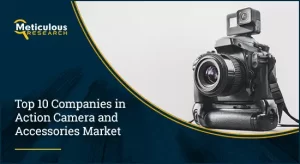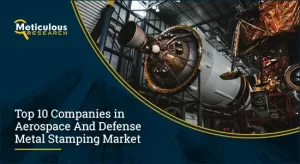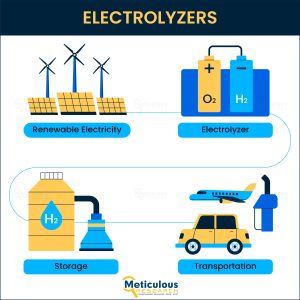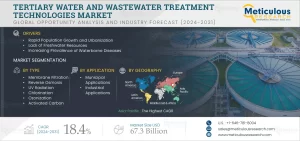The Logistics Automation Market is projected to reach $65.14 billion by 2031, at a CAGR of 10% from 2024 to 2031.
Automation is rapidly reshaping the logistics landscape, promising enhanced efficiency, precision, and cost-effectiveness. At the heart of this transformation are high-performance sensors, which are revolutionizing the tracking, management, and transportation of goods across the supply chain. As organizations strive to navigate the complexities of modern supply chain management, the integration of advanced sensor technologies is proving indispensable.
Download Sample Report Here @ https://www.meticulousresearch.com/download-sample-report/cp_id=5801
The Impact of Sensors on Logistics Automation
Enhancing Visibility and Traceability
In today’s competitive market, visibility and traceability are paramount. Advanced sensors such as Radio Frequency Identification (RFID), Global Positioning System (GPS), temperature sensors, humidity sensors, and motion sensors enable real-time data collection and monitoring. By providing up-to-the-minute information about the location, condition, and movement of goods, these sensors empower businesses to make informed decisions swiftly.
For instance, RFID technology can automate inventory management by tracking items as they move through the supply chain. This not only reduces manual errors but also enhances the accuracy of inventory counts, leading to better stock management. With GPS, companies can optimize route planning, ensuring timely deliveries and reducing fuel costs.
Optimizing Resource Allocation
The efficient allocation of resources is crucial in logistics. Sensors contribute to this optimization by providing valuable insights into operational performance. For example, temperature and humidity sensors can monitor the conditions of perishable goods in transit, ensuring that they are stored and transported under optimal conditions. This minimizes spoilage and waste, which is particularly important in industries such as food and pharmaceuticals.
Furthermore, motion sensors can track the movement of assets, helping organizations identify bottlenecks and inefficiencies in their operations. By analyzing this data, businesses can implement targeted strategies to streamline processes, reduce lead times, and enhance overall productivity.
Mitigating Risks
The logistics industry faces various risks, including delays, damages, and losses. Advanced sensors play a vital role in mitigating these risks. By enabling real-time monitoring, companies can quickly identify issues as they arise. For instance, if a temperature sensor detects that a shipment is outside the acceptable range, alerts can be triggered immediately, allowing for swift corrective actions to be taken.
Additionally, the integration of sensors in Automated Mobile Robots (AMRs) enhances safety and reliability. For example, SICK AG (Germany) recently launched the multiScan multi-layered LiDAR sensor, which offers floor-to-ceiling 360° environment perception. This innovation allows AMRs to navigate complex environments safely, avoiding obstacles and ensuring efficient operation.
Get Insightful Data On Regions, Market Segments, Customer Landscape, And Top Companies (Charts, Tables, Figures And More) :- https://www.meticulousresearch.com/request-sample-report/cp_id=5801
Advancements in Sensor Technology
Innovations Driving Market Growth
The logistics sector is witnessing significant advancements in sensor technology, which are crucial for the development of new automation solutions. Companies are investing in research and development to enhance sensor capabilities and meet the evolving needs of the industry. For example, in February 2024, Automation Technology GmbH (Germany) introduced the ECS (Eco Compact Sensor) series, designed for various machine vision applications, including logistics and packaging. This innovation exemplifies the ongoing efforts to create more efficient and effective logistics automation solutions.
As sensor technologies continue to evolve, organizations will have access to tools that improve not only operational efficiency but also customer satisfaction. Enhanced sensors can provide detailed analytics, helping companies understand customer preferences and streamline service delivery.
Scope of the Report
By Offering
- Hardware
- Automated Vehicle Systems
- Automated Storage & Retrieval Systems
- Automated Sorting & Conveyer Systems
- De-palletizing/Palletizing Systems
- Automatic Identification & Data Capture Systems
- Automated Container Handling Equipment
- Packaging Systems/Machines
- Other Hardware
- Software
- Cloud-based
- On-premise
- Services
- Consulting Services
- Deployment & Integration Services
- Support & Maintenance Services
By Type
- Inbound Logistics
- Outbound Logistics
By Automation Mode
- Fully Automatic Systems
- Semi-automatic Systems
By Application
- Inventory Management
- Packaging
- Order Management
- Cargo Management
- Transportation Management
- Other Applications
By End User
- Retail & E-commerce
- Manufacturing
- Healthcare & Pharmaceuticals
- Food & Beverage
- Automotive
- Aerospace & Defense
- Fashion & Apparel
- Courier, Express, and Parcel
- Ports & Warehouses
- Other End Users
Immediate Delivery Available | BUY THIS RESEARCH REPORT (Insights, Charts, Tables, Figures and More) –https://www.meticulousresearch.com/Checkout/66146248
The Future of Logistics Automation
The future of logistics automation is bright, driven by the continued integration of advanced sensors. As businesses seek to remain competitive in an increasingly demanding market, the reliance on automated solutions will only grow. The scalability of sensor technologies allows organizations to adapt quickly to changing market conditions, making them more agile and responsive.
Moreover, as the Internet of Things (IoT) becomes more prevalent, the synergy between sensors and connectivity will further enhance logistics operations. Real-time data sharing and communication will enable organizations to collaborate more effectively with suppliers and customers, leading to improved supply chain transparency and coordination.
Contact:
Meticulous Market Research Pvt. Ltd.
1267 Willis St, Ste 200 Redding,California, 96001, U.S.
USA: +1-646-781-8004
Europe: +44-203-868-8738
APAC: +91 744-7780008
Email– sales@meticulousresearch.com
Visit Our Website: https://www.meticulousresearch.com/
Connect with us on LinkedIn- https://www.linkedin.com/company/meticulous-research
Meticulousblog.org | Top Market Research Reports Blog – https://meticulousblog.org/







